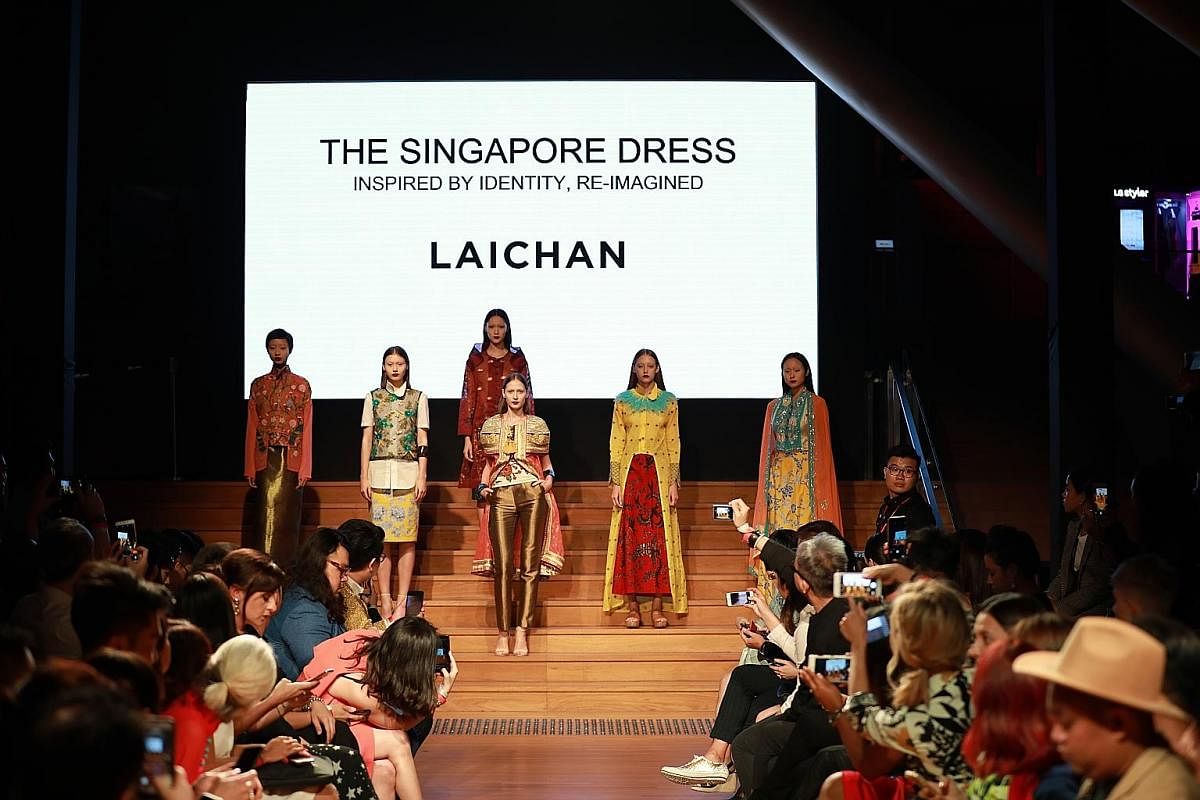Can Singapore fashion see a future?
Even before the pandemic, the fashion scene here had been suffering from issues such as unimaginative designs and high production costs

Covid-19 may have steered the Singapore fashion scene into trouble, but veteran designers say the rot in the industry had been festering long before the pandemic struck.
The crisis has merely exposed the flaws in the industry here.
Designers interviewed listed unsustainable production capacities, high rents and unimaginative designs as factors behind the slow death of an industry deemed largely non-essential.
Retired couturier Thomas Wee, 72, laments that the fashion scene in Singapore had "already been so boring prior to Covid-19".
Now lecturing part-time on pattern drafting at Temasek Polytechnic, he says it lacks the buzz of the 1980s - considered by many to be the golden age of Singapore fashion - when there were numerous fashion shows and glamorous window displays in department stores.
He had considered relaunching his haute couture label, but decided against it after observing the scene.
"The market is so bleak that I just refuse to compete. Even after all this has abated, it will go back to that normal, boring stage. I cannot foresee anything bright."
Similarly, musician and fashion veteran Dick Lee, 63, believes "Singapore fashion has had a problem before Covid-19".
"The way things are going, I don't think there's a hopeful future for local fashion here."
Besides his work in music and theatre, Lee also founded the Society of Designing Arts (Soda) in 1984, the first formal effort to introduce local fashion designers.
There were few international or fast-fashion labels here then, just a few high-end brands, he recalls.
Within two years, Soda took off and demand for young designers like Yang Derong and Daniel Yam was high.
There was no place for them to sell their designs though, so Lee set up Hemispheres in 1986 - a marketplace of sorts where each designer had his own booth.
He had an office at Delfi Orchard, and he asked his landlord if he could use part of the vacant third floor for free. The ongoing 1985 recession meant that "malls were tenant-less and there was a lot of empty shop space".
Hemispheres became a roaring success until the 1990s brought an influx of foreign brands into Singapore. Also, the recession had ended and the landlord took back the shop space.
Then the 2000s heralded a new era of online stores and fast fashion.
Says Lee: "Hemispheres was a project that was born out of an economic crisis; a disaster, kind of like this one.
"But the problem is now there is so much competition, and young designers emerging from Lasalle have no money to open brick-and-mortar shops."
Moreover, designers say the pandemic has changed what shoppers will want to buy from fashion labels in the future, perhaps at the expense of design.
"The circuit breaker has made everybody used to being home-bound," says Wee. "I believe many Singaporeans will have a different lifestyle moving forward."
Even though physical retailers saw a surge of shoppers the first weekend of phase two, Wee says: "Give it another two weeks and traffic will die down. People will just buy what they need."
Fashion designer Wykidd Song, who returned to the spotlight last year with his new label Akinn, also notes a move away from trend-led designs to more season-less styles as more stay home.
"We realised the mood for dressing up to go to the office was changing, as the idea of working from home was becoming more acceptable," says Song, 56.
"We had to change our planned designs and come up with ones that were suitable for both working at home as well as for running to the office for a quick errand."
Reflecting on his experience in retail during the Severe Acute Respiratory Syndrome (Sars) epidemic in 2003, when he had just opened his flagship Song+Kelly21 store at Forum Galleria, he adds: "Sars seems like just a bad cold compared to Covid-19. This current pandemic has cast an unprecedented gloom I have never experienced before.
"I think when the 'revenge buying' is done, there will be a true slump in mall shopping, and that slump will be here to stay."
PRODUCTION WOES
One glaring problem that has emerged from Covid-19 is the issue of stock and production.
Many are scrambling now to clear old inventory as a result of slowed sales, Wee observes. "They need to balance clearing stock with budgeting for the next launch or collection."
It is a problem that "will never be solved", he adds.
The lack of a low-cost production base or organised group of sewing staff in Singapore means many designers have to outsource their production to factories in Sri Lanka and China.
But often these require bulk orders.
"China won't touch you with a 10-foot pole unless you can hit the minimum order," says Wee.
While much of production is at a standstill now, he predicts an impending "bottleneck" in factories once retailers return and rush to produce new collections.
"Fashion is about how strong you are, from design to manufacturing. You can't be running to your neighbourhood tailor to make your pieces; they charge so much," he adds.
"I see young designers selling their dresses for $400 to $600 - that was my ready-to-wear price, which was between $350 and $600. And if you're a nobody, who's going to pay that?"
Agreeing that "we don't have the factories to make ready-to-wear", Lee says it was one reason why international buyers eventually stopped supporting Singaporean fashion designers when they sold at fashion shows in the 1990s.
"When people ordered something, our designers couldn't fulfil the demand because either quantities were too low or we didn't have adequate production capabilities.
"It was annoying to the buyers at fashion shows."
RELATED ARTICLE: MORE LOCAL, REGIONAL SUPPORT NEEDED
Join ST's Telegram channel and get the latest breaking news delivered to you.
A version of this article appeared in the print edition of The Straits Times on June 26, 2020, with the headline Can Singapore fashion see a future?. Subscribe

